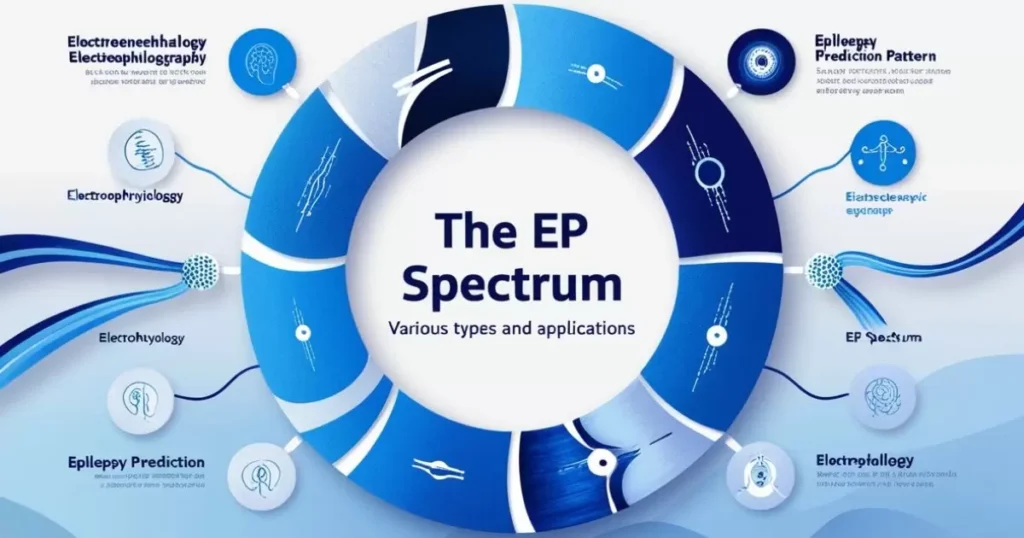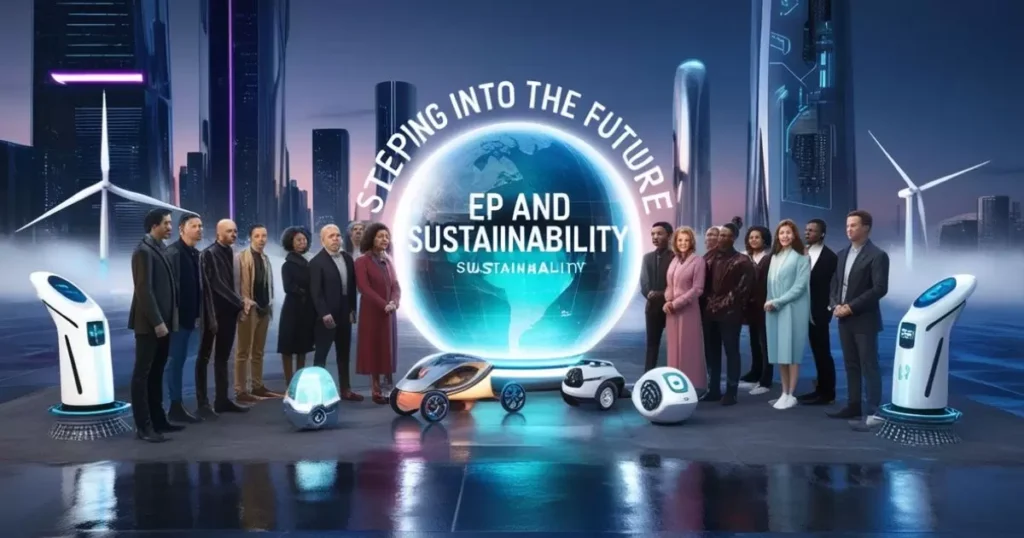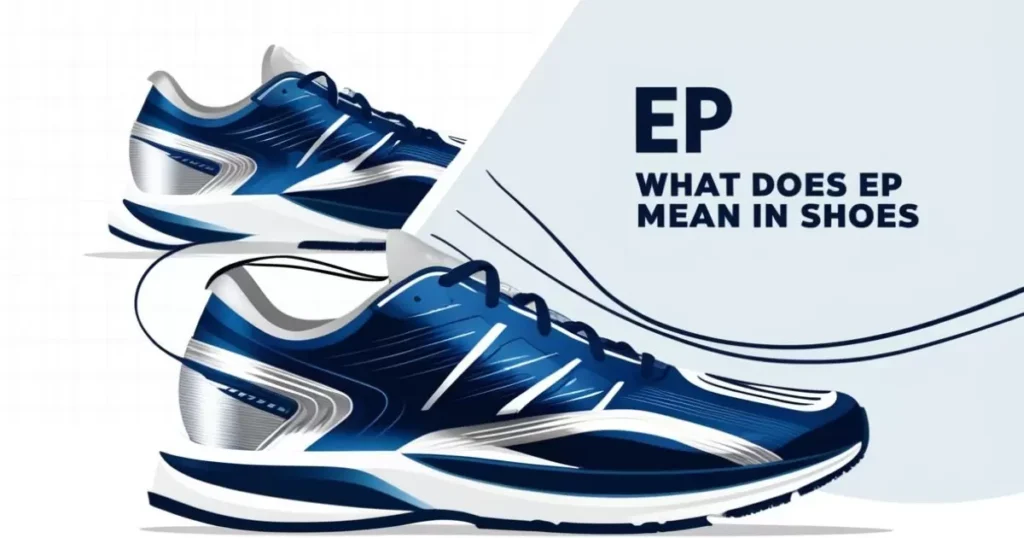Ever wondered what those mysterious letters “EP” mean when you’re shoe shopping? You’re not alone. In the world of footwear, EP is more than just a pair of initials—it’s a game-changer. Let’s lace up and explore the fascinating world of EP in shoes, unraveling its mysteries and discovering how it’s revolutionizing the way we walk, run, and play.
The ABCs of EP: Unraveling the Mystery
EP in shoes stands for “Engineered Performance.” It’s not just a fancy marketing term; it represents a leap forward in shoe technology that’s been quietly transforming the footwear industry over the past decade.
Origin and Evolution of EP Technology
The concept of EP emerged in the early 2000s when shoe manufacturers began looking for ways to enhance performance beyond traditional materials and designs. It started as a niche technology in high-end athletic shoes but has since spread to various footwear categories.
Breaking Down the EP Acronym
- E for Engineered: This isn’t about slapping on extra cushioning. It involves precise design and material science to create specific performance attributes.
- P for Performance: The end goal is always to improve how the shoe functions, whether that’s for comfort, speed, or durability.
“EP technology is to shoes what high-octane fuel is to race cars—it’s the secret ingredient that pushes performance to the next level.” – Dr. Sarah Johnson, Biomechanics Expert
EP’s Role in Revolutionizing Shoe Design
EP isn’t just a single feature; it’s a holistic approach to shoe design that considers every aspect of the shoe’s performance.
How EP Enhances Shoe Performance
- Customized Cushioning: EP allows for targeted cushioning where your foot needs it most.
- Weight Reduction: Advanced materials mean better performance without added bulk.
- Improved Stability: EP designs often incorporate stability features for better control.
- Enhanced Breathability: Many EP technologies focus on improving airflow within the shoe.
The Science Behind EP Cushioning
EP cushioning often uses complex polymer structures that respond differently to various levels of force. For instance, they might be soft when you’re walking but firm up for explosive movements like jumping.
Comfort Redefined: EP’s Impact on Your Feet

Let’s face it: uncomfortable shoes are the worst. EP technology aims to make that a thing of the past.
Pressure Point Reduction
EP designs often use heat-mapping technology to identify pressure points on the foot. This data helps create shoes that distribute pressure more evenly, reducing hot spots and blisters.
Energy Return and Its Benefits
One of the most exciting aspects of EP is energy return. This concept involves the shoe absorbing the energy from your foot strike and then returning a portion of it to propel you forward. It’s like having a little spring in your step!
| Energy Return Percentage | Perceived Benefit |
| 0-20% | Minimal |
| 21-40% | Noticeable |
| 41-60% | Significant |
| 61%+ | Game-changing |
Comparing EP to Traditional Cushioning Systems
Traditional foam cushioning compresses over time, losing its effectiveness. EP systems often use materials that maintain their properties longer, providing consistent comfort throughout the shoe’s life.
Durability Meets Design: EP’s Longevity Factor
Nobody likes replacing shoes frequently. EP technology is changing the game when it comes to shoe longevity.
Wear and Tear Resistance
EP often incorporates materials that are more resistant to compression and abrasion. This means the soles of your shoes maintain their shape and effectiveness longer, even with heavy use.
How EP Extends Shoe Life
- Self-Healing Materials: Some EP technologies include materials that can repair minor damage on their own.
- Modular Designs: Certain EP shoes allow for easy replacement of worn components, extending the overall life of the shoe.
The EP Spectrum: Various Types and Applications

EP isn’t one-size-fits-all. Different activities require different approaches to engineered performance.
EP in Athletic Shoes
In the world of sports, EP shines brightest. Here’s how it’s applied in various athletic contexts:
- Running: Focus on energy return and impact absorption
- Basketball: Emphasis on lateral stability and cushioning for jumps
- Tennis: Designed for quick directional changes and durability
EP in Casual and Formal Footwear
EP isn’t just for athletes. It’s making its way into everyday shoes:
- Work Shoes: Incorporating comfort features for all-day wear
- Dress Shoes: Adding flexibility and cushioning without compromising style
Specialized EP for Different Sports
Some sports have very specific needs that EP can address:
- Golf: Stability during the swing, traction on various surfaces
- Hiking: Durability and support for rough terrain
- Cycling: Stiffness for power transfer, breathability for long rides
EP Innovators: Brands at the Forefront
Several brands have made EP a cornerstone of their shoe technology. Let’s look at some standout innovators:
Major Players in EP Technology
- Nike: Their React foam and ZoomX technologies are prime examples of EP in action.
- Adidas: Boost technology revolutionized the concept of energy return.
- New Balance: Fresh Foam and FuelCell showcase their commitment to EP.
- Brooks: DNA LOFT and DNA AMP represent their take on adaptive cushioning.
Unique EP Implementations by Different Manufacturers
- Hoka One One: Maximalist cushioning with a focus on lightweight materials
- On Running: CloudTec® technology for a unique cushioning experience
- Asics: GEL® technology combined with FlyteFoam for responsive cushioning
The Collaboration Effect: EP in Sports Partnerships
Athletes aren’t just wearing EP shoes; they’re helping design them.
How Athletes Influence EP Development
Professional athletes provide invaluable feedback on shoe performance, often leading to innovations in EP technology. Their input helps create shoes that meet the demands of elite competition.
Case Studies of Successful EP Collaborations
- LeBron James and Nike: The LeBron shoe line incorporates cutting-edge EP for basketball performance.
- Eliud Kipchoge and Nike: The development of the Vaporfly for marathon running pushed EP to new limits.
- Serena Williams and Nike: Her input has led to innovations in tennis shoe design, particularly in stability and quick movements.
The Price of Innovation: EP’s Impact on Your Wallet
Let’s talk money. EP technology often comes with a higher price tag, but is it worth it?
Cost Analysis of EP vs. Standard Shoes
While EP shoes generally cost more upfront, they often last longer and provide better performance. Here’s a quick comparison:
| Aspect | Standard Shoe | EP Shoe |
| Average Cost | $60-$100 | $100-$200+ |
| Typical Lifespan | 4-6 months | 6-12 months |
| Performance Features | Basic | Advanced |
Long-term Value Proposition of EP Footwear
When you factor in the extended lifespan and improved performance, EP shoes can often be a smart long-term investment, especially for serious athletes or those with specific foot care needs.
Stepping into the Future: EP and Sustainability

As we become more environmentally conscious, EP is adapting to meet these concerns.
Eco-Friendly EP Alternatives
Several brands are developing EP technologies that are more sustainable:
- Adidas Futurecraft.Loop: A fully recyclable performance running shoe
- Nike Flyknit: Reduces waste in the manufacturing process
- Allbirds: Using natural materials like merino wool and eucalyptus fibers
Recycling and Upcycling EP Components
Some companies are implementing programs to recycle old EP shoes into new products, reducing waste and closing the loop on shoe production.
EP Beyond Shoes: Expanding Applications
The principles behind EP aren’t limited to footwear. They’re finding applications in other areas too.
EP in Orthotics and Insoles
The customization potential of EP technology makes it ideal for creating advanced orthotics and insoles, providing tailored support for various foot conditions.
Other Industries Adopting EP Technology
- Automotive: Car seats using EP principles for better comfort
- Furniture: Office chairs incorporating EP for improved ergonomics
- Sports Equipment: Helmets and protective gear benefiting from EP innovations
DIY EP: Can You Add It to Your Existing Shoes?
For the DIY enthusiasts out there, is it possible to add EP features to your current kicks?
Aftermarket EP Solutions
While you can’t fully replicate branded EP technologies, there are some aftermarket products that can enhance your shoes:
- Advanced insoles with energy-return properties
- Heel cups with gel or advanced foam technologies
- Lacing systems that improve fit and reduce pressure points
Pros and Cons of DIY EP Enhancements
Pros:
- Cost-effective
- Can improve comfort of older shoes
- Customizable to your specific needs
Cons:
- Not as integrated or effective as built-in EP
- May alter the fit of your shoes
- Limited in scope compared to full EP implementations
The EP Debate: Weighing the Pros and Cons
Like any technology, EP has its supporters and critics.
Expert Opinions on EP Effectiveness
Many podiatrists and biomechanics experts praise EP for its potential to reduce injuries and improve performance. However, some caution that it’s not a one-size-fits-all solution and that proper fitting is still crucial.
Consumer Experiences with EP Footwear
User reviews of EP shoes are generally positive, with many reporting improved comfort and performance. However, some users find the technology unnecessary for casual use or prefer traditional shoe designs.
Caring for Your EP Shoes: Maintenance Tips
To get the most out of your EP shoes, proper care is essential.
Cleaning and Storing EP-Enhanced Footwear
- Clean according to the manufacturer’s instructions
- Allow shoes to dry naturally, away from direct heat
- Use shoe trees to maintain shape when not in use
Maximizing the Lifespan of EP Components
- Rotate between multiple pairs of shoes
- Replace insoles regularly if removable
- Address any wear and tear promptly
FAQs: Your Burning Questions About EP in Shoes Answered
Is EP technology worth the extra cost?
For many users, especially athletes or those with foot issues, the added comfort and performance can justify the higher price.
Can EP shoes help with foot pain?
While not a cure-all, many users report reduced foot pain due to the enhanced cushioning and support of EP shoes.
Are all EP technologies the same?
No, different brands have their own proprietary EP technologies, each with unique features and benefits.
How long do EP shoes typically last?
With proper care, EP shoes often last longer than traditional shoes, sometimes up to a year or more of regular use.
Can I use EP shoes for everyday wear?
Absolutely! While often designed for athletic performance, many EP shoes are suitable and beneficial for daily use.
Conclusion: Is EP the Future of Footwear?
As we’ve explored, EP in shoes represents a significant leap forward in footwear technology. From enhanced comfort and performance to improved durability and sustainability efforts, EP is changing the way we think about and interact with our shoes.
While it may come with a higher price tag, the benefits of EP technology can be substantial, especially for athletes, fitness enthusiasts, or anyone who spends a lot of time on their feet. As the technology continues to evolve and become more accessible, we’re likely to see EP features become increasingly common across all types of footwear.
Whether you’re a seasoned athlete or just someone looking for a more comfortable daily wear, understanding what EP means in shoes can help you make more informed decisions about your footwear. So the next time you see those two letters, you’ll know you’re looking at shoes that are engineered to perform.

An author is a creator of written content, producing works ranging from books and articles to blog posts and essays. They use their creativity, knowledge, and research to inform, entertain, or persuade readers. Authors often have a unique voice and perspective, contributing significantly to literature and various media.

